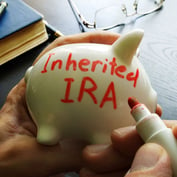This August will mark the 10th anniversary of the Pension Protection Act of 2006 (PPA), the most comprehensive pension reform legislation since ERISA’s enactment in 1974.
Among the PPA’s provisions, the bill enabled employers to automatically enroll workers in defined contribution plans and to boost contributions unless employees opt out. The PPA also lets plan sponsors establish a qualified default investment alternative (QDIA), a default fund that releases the plan fiduciary of liability for investment losses.
These PPA features — auto enrollment and auto escalation and the QDIA (typically a target-date fund) — now are hallmarks of 401(k)s, 403(b)s and other defined contribution plans. As such, they’ve greatly helped American workers prepare for retirement, particularly young millennials who view long-term savings as a low priority.
Yet, much remains to be done to put workers’ nest eggs on a solid financial footing. This much became evident at a February 24 press briefing hosted by BlackRock executives, who noted that more than 70 million Americans still don’t have access to an employer-sponsored plan.
Among those who do, many aren’t receiving the retirement planning advice they need. The upshot is that these workers aren’t saving enough, an issue — one of several — for which there’s big perception gap between employers and their workers.
Consider this: Whereas 59 percent of 200 plan sponsors polled by BlackRock in its “Pulse Survey” say the majority of their participants are saving enough to retire, only 28 percent of 1,003 participants surveyed express confidence in their savings rate.
Many have good reason to be fearful.
“For the typical 60-year, if you include 401(k) and IRA assets, the average amount saved is about $300,000,” said Anne Ackerley, head of BlackRock U.S. and Canada Defined Contribution. “That would generate about $15,000 annually in retirement, starting at age 65. For most people, that’s not enough money to retire on.”
The disconnect between plan sponsors and participants extends to other areas.
For example, 67 percent of plan sponsors think that participants understand their investment options and other retirement savings information. That compares to 43 percent of participants who actually are knowledgeable. And 64 percent of sponsors believe participants know how much to set aside — versus 37 percent of participants.
The good news is that more plan sponsors are taking action — thanks in part to the PPA — to help workers better prepare for retirement.
In the last 12 months, many plan sponsors:
- Made auto escalation automatic or added a company match (24 percent of those polled);
- Added auto escalation as an opt-in feature (23 percent);
- changed the default contribution rate (19 percent); and/or
- made catch-up contributions automatic (16 percent).
Taking the next steps
These measures mark progress, but only for the benefit for workers eligible to participate in an employer-sponsored plan. Which brings us back to those 70 million Americans without access to one. How to help them?








 March 02, 2016 at 06:15 AM
March 02, 2016 at 06:15 AM










